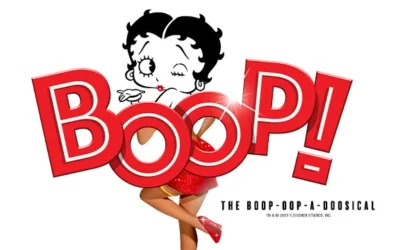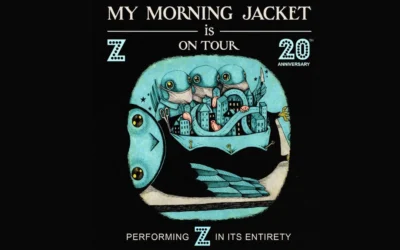UPDATED May 6, 2010, to reflect an updated version of Dr. Joris Drayer’s article.
Given recent revenue shortages and improving technology, it has been an exciting last few years in the world of ticketing. Recent trends such as dynamic pricing and paperless ticketing indicate that sport organizations are indeed willing to experiment with innovative ticketing strategies. However, the lack of an emerging industry standard for ticketing suggests that each system is not without its issues.
At both the Ticket Summit and InTix conferences early in 2010, dynamic ticket pricing was a hot topic. According to the San Francisco Examiner, the San Francisco Giants saw their ticket sales go up by 20 percent last year for the 2,000 dynamically priced seats in 2009. The Giants were so happy with their results that, in 2010, they will dynamically price their entire stadium in the hopes of simultaneously increasing attendance and ticketing revenue. However, despite this success, the dynamic pricing scheme has been relatively slow to catch on.
Although hesitance to adopt new strategies is nothing new for the sport industry, the concept of dynamic pricing is drawing polarizing opinions. Advocates point to a win-win situation regardless of demand conditions. Low demand equals lower prices which equals higher attendance. Higher demand equals higher prices, which leads to more revenue from ticket sales. Advocates also suggest that a decreased presence of ticket scalpers is likely to result from this more efficient pricing structure, which would enhance the fan experience.
However, there are significant criticisms of this system. For example, what dynamic pricing means to the valuable season ticket holder base is a significant point of contention. Certainly, no team wants a season ticket holder sitting next to someone who paid a lower price. Additionally, critics question the ability of a computerized algorithm to accurately predict market value for tickets.
For example, as of mid-February, tickets in the lower box section for opening day were priced on the Giants Web site at $75. However, prices on several secondary ticketing Web sites were hovering between $150 and $200, with some specific seat locations within the lower box section priced significantly higher than that, further indicating the inefficiency of the Giants’ pricing structure.
Of course, the Giants are more likely to underprice than overprice and so their ticket prices, although dynamic in nature, may not be intended to reflect the real market value. Further, as demand changes over time and consumers’ plans change, the need to transfer tickets will always remain, meaning that dynamic pricing may not reduce the presence of resellers. As of mid-February, StubHub indicated that there were over 2,500 tickets available on their Web site alone.
Finally, there is the question of how to market these fluctuating prices. Certainly, educating a patron base about a new and innovative pricing structure is an important process. Teams will need to make decisions on how transparent this pricing structure really is. Teams typically want tickets sold as early as possible; however, some fans may be incentivized to wait until prices potentially fall. How teams balance pushing advance sales and season ticket sales while providing fans with the information needed to determine when to buy is a critical marketing decision.
The other hot-button topic in ticketing is paperless tickets. The rationale behind paperless tickets is to easily and securely facilitate the exchange of tickets and to obtain more complete information about consumers. However, it is also an issue of control.
Proponents of this strategy suggest that paperless tickets will allow for the secure exchange of tickets not only in the primary market, but especially in the secondary market. However, to date, this exchange can only be facilitated by the primary provider. Thus, the sport property (the Cleveland Cavaliers and Veritix are one of the few current examples although they also still offer traditional paper tickets) handles not only the original exchange of tickets, but each subsequent exchange as well. Naturally, there is a fee each time the ticket exchanges hands, which provides another revenue stream for sport organizations. This system also allows sport properties to maintain their preferred pricing structure in the primary market.
These specific benefits are strong; however, there are opponents who decry putting restrictions on ticket transfer claiming that it will lead to higher prices in the secondary market. These critics argue that patrons should have the right to buy and sell tickets on any platform. Currently, Sports Business Journal reported that paperless tickets represent less than 1 percent of the market and it may be likely that this remains one option among many (i.e., will call, print-at-home, U.S. Mail, etc.) for ticket distribution rather than becoming the industry standard.
Ultimately, it appears that both models have significant staying power.
The dynamic pricing model is a low-cost solution for boosting attendance and ticket revenue, which is certainly a popular formula for profit-driven organizations. Concerns over the season-ticket base are not without potential solutions. For example, teams could provide credit towards merchandise and concessions in the event that prices fall below the average season ticket price.
However, fears of negative public perception may prevent this model from becoming the industry standard. A quick Internet search reveals that not all consumers favor this approach. Although it was positioned as a trial run for dynamic pricing, using this model for only the least desirable inventory, as the Giants did in 2009, may make as much sense as dynamically pricing an entire facility as demand in premium seat locations is more likely to remain consistently high.
Paperless ticketing as a convenient option for ticket buyers can be a tremendous benefit. However, forcing it on ticket buyers presents some logistical challenges, such as when different people in the same party arrive at different times or when the ticket purchaser is buying for someone else to attend. These factors, combined with the restrictions on the transferability of tickets may prevent this from becoming the industry standard.
Ultimately, the mere fact that teams are willing to experiment with the structure of their ticket operations, both primary and secondary, indicates a dramatic shift in thinking. However, whether or not we ever see all sport properties uniformly agree on a single strategy remains to be seen.
After four seasons with the Oakland Athletics, Joris Drayer completed his Ph.D. at University of Northern Colorado in 2007. Drayer’s dissertation examines the strategic interactions between the primary and secondary ticket markets in the NFL. Currently a professor at The University of Memphis, Drayer conducts research covering a variety of ticketing-related topic areas, including price determination, demand estimates in the secondary market, the development of competitive strategies, and consumer perceptions of price and value. Drayer also conducts research on consumer behavior, particularly in relation to fantasy sports participation. Drayer also teaches undergraduate and graduate courses in sport marketing and finance.



